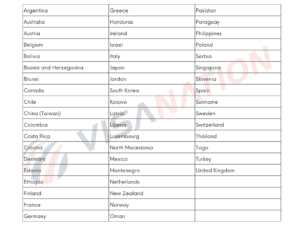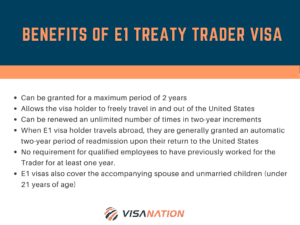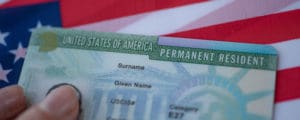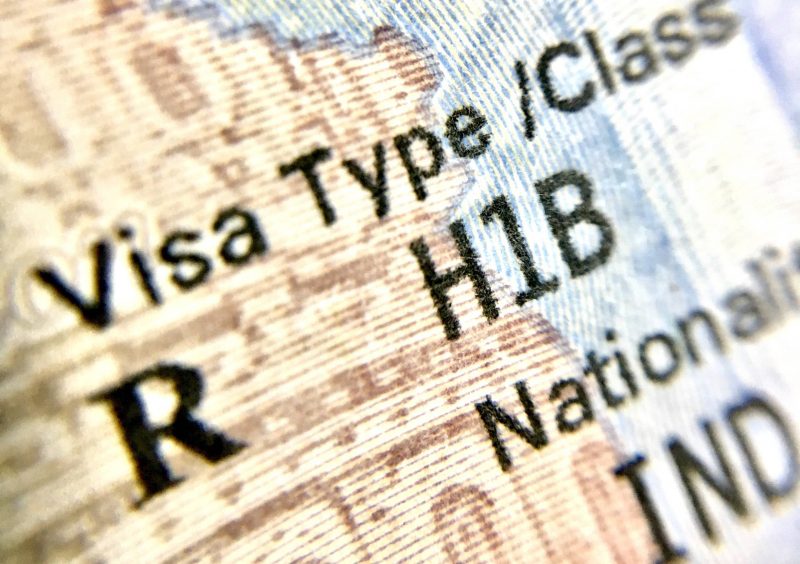E-1 Employee Visa Lawyer Guide
Treaty traders and investors can leverage the E visa category to foster cross-border commerce and secure their path to success in the United States. Within the umbrella of the E category, it is further broken down into the classifications E-1, E-2 and E-3. The E-1 treaty trader visa possesses many benefits for those who qualify under the regulations. In this guide, we’ll cover this employment-based visa lawyer process for obtaining an E-1 visa.
Benefits of E1 Treaty Trader Visa
To begin with, E-1 visas are designed for citizens from specific treaty countries to gain access to the United States solely for the purposes of international trade on his/her behalf. The complete list of treaty countries can be seen here. There are dozens on the list.
Please refer to the chart hyperlinked above for the most up-to-date countries.
We make employment immigration to the U.S. easy and simple.
Schedule a Consultation
Below are some overarching benefits of the E-1 Visa:
- Initially, E1 visas can be granted for a maximum period of two years, allowing the visa holder to freely travel in and out of the United States.
- The E1 visa can be renewed an unlimited number of times in two-year increments. This provides Treaty Traders the opportunity to stay in the United States for an extended duration, ensuring the ongoing success of their business.
- When an E1 visa holder travels abroad, they are generally granted an automatic two-year period of readmission upon their return to the United States.
- E1 visa holders receive legal authorization to work for the trading firm in the United States.
- Unlike the L1 visa, there is no requirement for qualified employees to have previously worked for the Trader for at least one year.
- E1 visas also cover the accompanying spouse and unmarried children (under 21 years of age) of the applicant. The spouse can apply for work authorization anywhere in the United States without restrictions. However, the children are not permitted to accept employment.
E-1 Work Visa Requirements
We highly recommend you hire a qualified E1 visa application lawyer to file your case with USCIS. This ensures all relevant documents and evidence will be submitted with your case.
In order to qualify for an E-1 classification as a treaty trader, the individual must meet the following criteria:
- Hold nationality in a treaty country that has a current commerce and navigation agreement with the United States.
- Engage in substantial international trade between the treaty country and the United States.
- Conduct principal trade, which means the majority of the trade volume must be between the United States and the treaty country that qualified the trader for E-1 classification.
As per the given definition, trade refers to the exchange of various trade items between the United States and the relevant treaty country. These trade items encompass a wide range of goods and services, including but not limited to:
- Goods
- Services
- International banking
- Insurance
- Transportation
- Tourism
- Technology and its transfer
- Specific news-gathering activities
What does the term “substantial trade” actually mean? Well, it does not have a fixed monetary threshold. Instead, it focuses on continuous flows of significant international trade items involving numerous transactions over time. The weight of consideration lies not only on the monetary value but also on the frequency and quantity of transactions.
What does “principal trade” mean? It signifies that the trade volume between the treaty country and the United States must exceed 50% of the total exchange volume conducted by the business.
Wondering if an E-2 visa would be more beneficial? The major difference is in the focus on actual capital investment and the role of the visa holder with the E-2. So that means the E-2 visa allows nationals of treaty countries be admitted to the U.S. when investing a substantial amount of capital in the business. Learn about E-2 visa processing times. Premium processing can be selected to expedite your E-2 visa for an additional cost of $2,500.
Check out this E-1 vs E-2 visa article.
We make employment immigration to the U.S. easy and simple.
Schedule a Consultation
Requirements for E-1 or E-2 Classification as an Employee of a Treaty Trader or Treaty Investor
In order to qualify as an employee for an E-1 visa you must:
- Share the same nationality as the primary employer who is a foreign national from the treaty country.
- Fulfill the legal definition of an “employee” as per the laws.
- Either hold an executive or supervisory role or possess special qualifications if employed in a lower capacity.
What Can You Do with an E1 Visa?
By having an E-1 visa you can engage in specific activities related to substantial trade between the United States and your home country. Here are some of the key things you can do with an E-1 visa:
- Conduct Trade: The primary purpose of the E-1 visa is to facilitate trade activities. As an E-1 visa holder, you can participate in international trade between the U.S. and your home country. This can involve the exchange of goods, services, international banking, transportation, technology transfer, and other trade-related activities.
- Work for the Treaty Trader: The E-1 visa allows you to work for the enterprise that serves as the treaty trader. This can include working in a managerial, executive, supervisory, or essential skills role within the qualifying enterprise. The work must be directly related to the trade activities between the U.S. and your home country.
- Engage in International Trade: As an E-1 visa holder, you can engage in a wide range of activities directly related to international trade. This can include negotiating contracts, attending trade shows and exhibitions, purchasing goods or services, consulting with business associates, conducting market research, and promoting trade relations between the U.S. and your home country.
- Stay in the U.S. Temporarily: The E-1 visa allows you to stay in the U.S. for an initial period of up to two years. However, it can be extended indefinitely in increments of up to two years as long as the trade activities continue to meet the requirements of the E-1 visa.
Steps to File Your Petition
- Complete Form I-129, Petition for a Nonimmigrant Worker
- Pay applicable filing fees
- Include all necessary evidence and supporting documentation
- After USCIS receives your I-129 and they process your application you will receive a receipt notice confirming they’ve received it as well as a biometric service notice (if applicable), notice to appear for an interview (if required) and notice of their ultimate decision.
In Our Experience
From our experience helping clients build a case around applying for any visa in the E visa classification, we have found that preparing a very robust business plan and including that in your application package is very beneficial.
One recent example of a client success story in the E visa classification was for an Argentinian Entrepreneur who needed to secure an E-2 visa for a trucking company in the U.S. We were able to prove, with abundant evidence, that our client’s 20+ years of experience in managerial, technical experience, and leadership met the criteria in addition to the large amount of personal funds he invested in a U.S. business.
Importance of Employee Visa Legal Representation
Our E-1 work visa attorneys are highly skilled at creating a strong case for the E-1 visa. It’s critical to choose an E1 visa attorney who knows how to any RFEs or challenges that may arise along the way. With a thorough understanding of the USCIS requirements and their expectations, our attorneys proactively work to address any potential issues, ensuring that your application is strong and compelling from the start. Should an RFE be issued, our attorneys will guide you through the process, assisting you in preparing a thorough and persuasive response. We will carefully analyze the USCIS’s concerns, gather additional evidence, and provide clear and concise explanations to address any doubts or uncertainties. Our goal is to maximize your chances of success and overcome any obstacles that may arise during the application process.
E-1 Frequently Asked Questions
Can I apply for E-1/E-2 outside of the United States?
No, you cannot but there is a different classification suitable for this E-2 CNMI-Only Investors.
Do E-3 visas need to include anything with Form I-129?
Yes, they need to include a Labor Condition Application (LCA), academic or other credentials demonstrating qualifications for the position and a job offer or other documentation establishing that the occupation is a specialty occupation and that you will be paid the higher of the actual or prevailing wage.
Can spouses and unmarried children of E-1 treaty traders and employers accompany them?
Yes, the E1 visas also cover the accompanying spouse and unmarried children (under 21 years of age) of the applicant. Moreover, the spouse can work in the United States without restrictions and without having to apply for a work permit. Children are allowed to attend schol but cannot work while on E1 visa status.
If the family members are currently present in the United States and wish to change their status or extend their stay as dependents under the E-1 classification, they can submit a single Form I-539, Application to Change/Extend Nonimmigrant Status, along with the required fee.
Is there a limit on how much trade has to happen for the visa to take effect?
No there is no concrete limit but USCIS does place emphasis on the number of transactions you make.
Can E-1 lead to green card?
While there is no direct path to permanent residency, an E-1 visa could lead to a green card if you are eligible through other avenues such as employment-based or family-based immigration categories.
How long does it take to get an E1 visa?
The actual processing time to get an E-1 visa will depend on if you are applying from inside or outside of the United States and which service center is handling it.
Who can apply for E1 visa?
Foreign nationals of treaty countries that have a valid agreement with the United States can apply for an E1 visa.
Can I travel outside of the country on the E1 visa?
Yes, you are able to travel outside of the U.S. and reenter.
How can I check the status of my visa?
You can use USCIS’s online status check tool. Enter your receipt number and it will pull up-to-date information on your application. The receipt number is a unique 13-character identifier that the USCIS provides for each application it receives.
We make employment immigration to the U.S. easy and simple.
Schedule a Consultation









